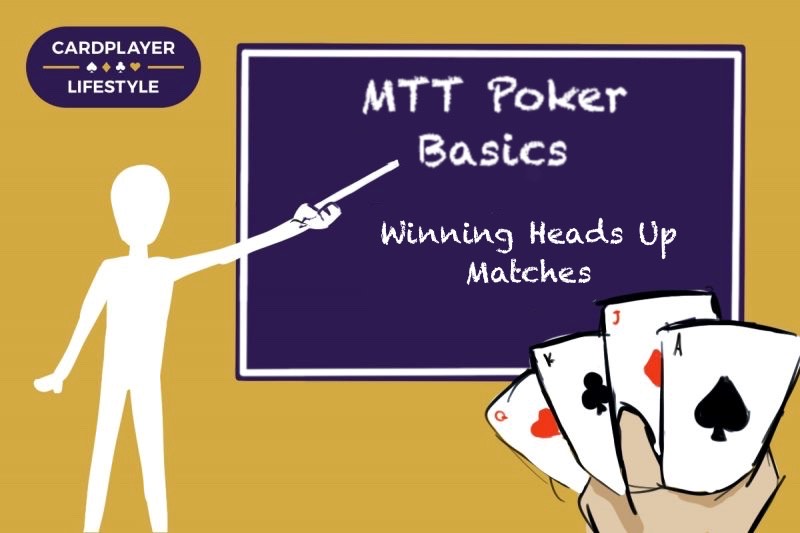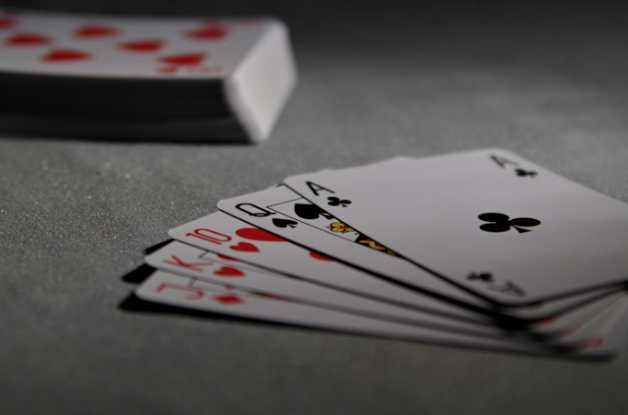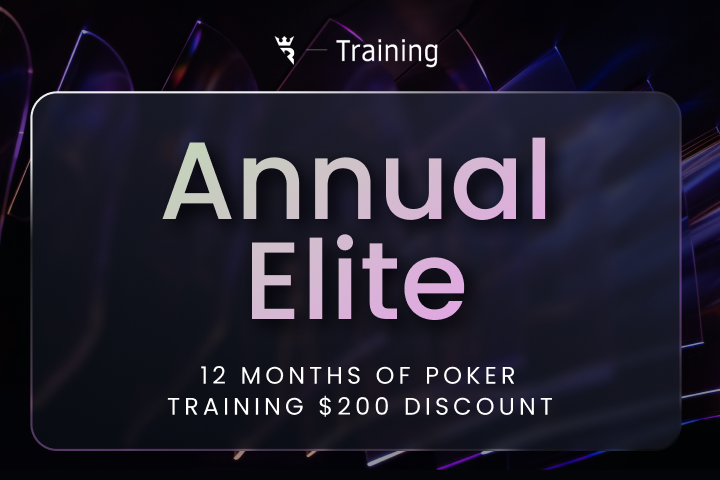Ed. note: This is the tenth and final article in a series designed to help recreational tournament poker players build their hobby into a profitable endeavor.
Heads-up poker, the final stage of multi table tournaments, often gets overshadowed by the complexities of deepstack play and ICM . Many players shrug off the significance of heads-up, noting that you rarely get there and your overall poker skills should suffice when you do. But that oversight can be costly. To truly excel in tournaments and maximize winnings, understanding and preparing for heads-up play is essential.
In order to make money in tournaments over the long run, you need to win tournaments at some frequency because so much of the prize pool is up top. You may look at a second or third place finish as a win overall, but if you consistently surrender doubling your payout due to being unprepared, it will be difficult to stay profitable.
Heads-up play is unique because it is the only time in a tournament when ICM considerations are irrelevant. In heads-up, you should focus on maximizing chip EV (Expected Value) rather than protecting your stack to avoid elimination. Having a simple strategy and adjusting to your opponent will go a long way toward earning the top prize.

Heads-Up Basics
In heads-up play, your strategy will need to change dramatically. You have to play most hands if you have at least 12 big blinds or so. Considering there are antes in play, you can only justify open folding the absolute bottom of your range like 72o, 93o, etc.
So how should we change our play with so many hands? First of all, always assume your opponent is going to start too passive. We will talk more about player types soon, but in general, players are inexperienced heads up and will be uncomfortable. I recommend raising every hand you play from the button until your opponent starts playing back at you.
Once you’re in the post-flop stage, remember that both players are likely holding a wide range of hands. To exploit this, you can c-bet on dry, high card flops and adjust according to your hand strength on future streets when called. Even if you lose some medium pots, the small pots you win by applying consistent pressure will add up over time.
Adapting to Different Poker Player Types
Heads-up players are often either far too passive or aggressive. Recognizing and adjusting to these tendencies quickly can give you the edge to win the match.
Passive opponents tend to limp in position and overfold to small c-bets. If you notice your opponent has started passively, raise with any hand when in position. If they tend to fold to flop aggression, you can continue to c-bet often.
When your opponent is usually folding to the preflop raise, you should take notice when they do call or 3-bet preflop. Alarm bells should be going off in your head then, alerting you that they are suddenly willing to play a much bigger pot. You can typically play pretty straight forward versus this type of opponent through the hand in this situation.
On the other hand, loose players tend to be overly aggressive. They might 3-bet frequently, call down with weak hands, or make erratic plays. Against these players, adopt a limping strategy with a wide range of hands preflop. When they raise, you can fold the weakest hands, call with playable ones, and 3-bet with the strongest and marginal holdings. This approach allows you to capitalize on their over-aggression and secure larger pots without showdown.
Playing with Short Stacks
When you or your opponent drop to 10 big blinds or less, the tournament is within striking distance for the chip leader. While there is still room for a bit of postflop play, beginners will often make this a preflop shoving war.
With a short stack, use a limp or jam strategy. Limping allows you to keep the pot manageable and fold easily if the opponent raises aggressively. With medium strength hands like A6o, Q9s, K8o, you can either jam to put the short stack all in or jam your own short stack, forcing the opponent to have a strong enough hand to call off.
As you face short stack jams, calling off with a wider range is necessary. Hands like QTs become more valuable because they have good equity against a shoving range. Be prepared to call with high card hands that may normally fold in full-ring play. Any reasonable high card hand should give some consideration to calling if you believe your opponent is shoving widely.
Fold equity is as important as ever heads up. Keeping this in mind when there is a short stack will work for the basics. But remember that even medium strength Ax hands can work well as a 3-bet jam against an open with 15-25 big blinds.
Gaining a Competitive Edge
There’s no doubt that heads up poker is tough. Some of the best poker players in the world cut their teeth in the game mastering heads up cash and win the nosebleed tournament stakes with their expertise.
But luckily, there is no need for you to master heads up as a beginner. Keep in mind, most players are just like you and are inexperienced at this stage. By understanding the basics, adjusting to your opponent’s tendencies, and employing effective strategies, you can start your heads up match with a huge edge versus any opponent. Keep practicing, pay attention to your opponent, and watch your heads-up results skyrocket.







